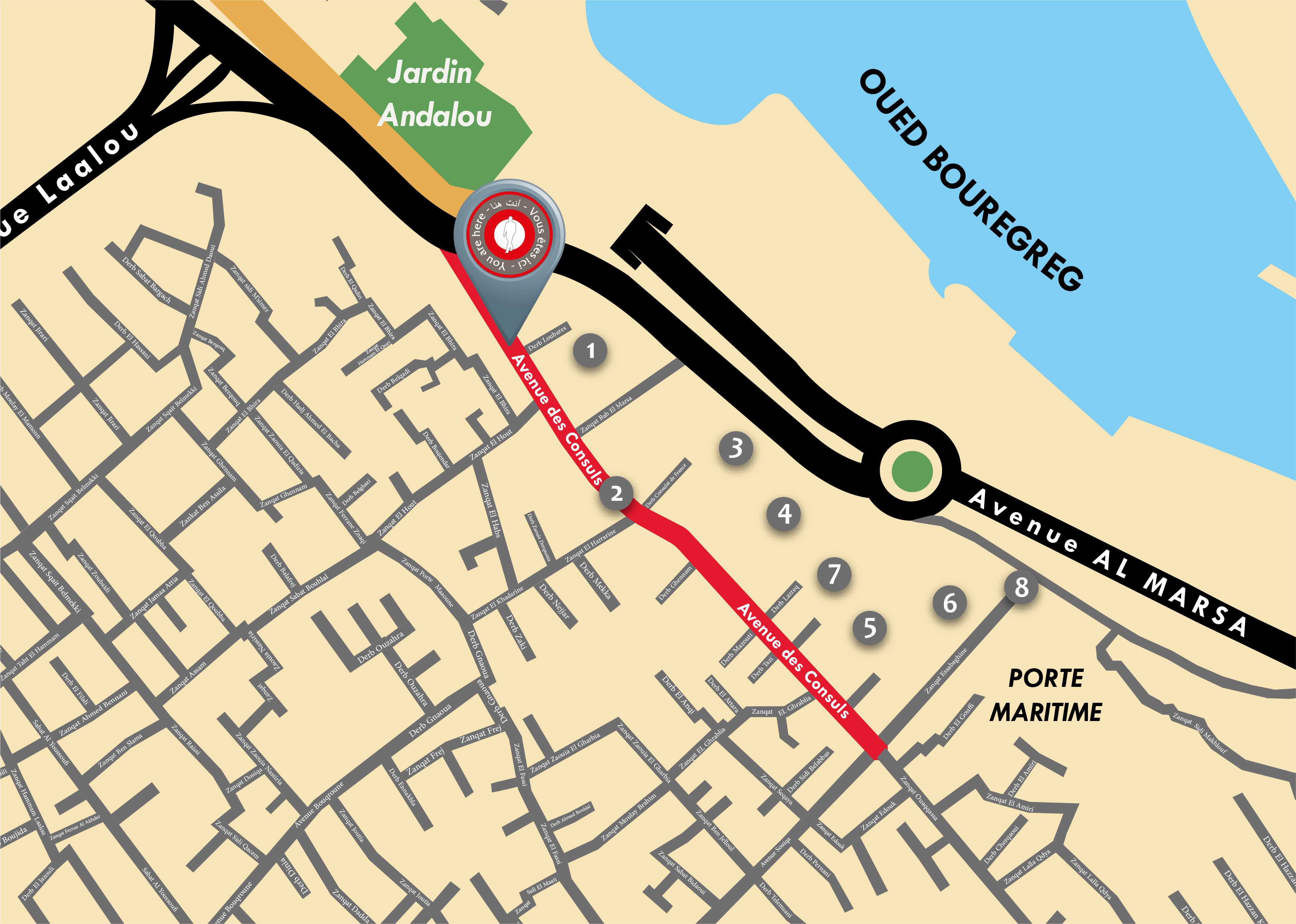
1- Stores of sidi Muhammad ben Abdellah
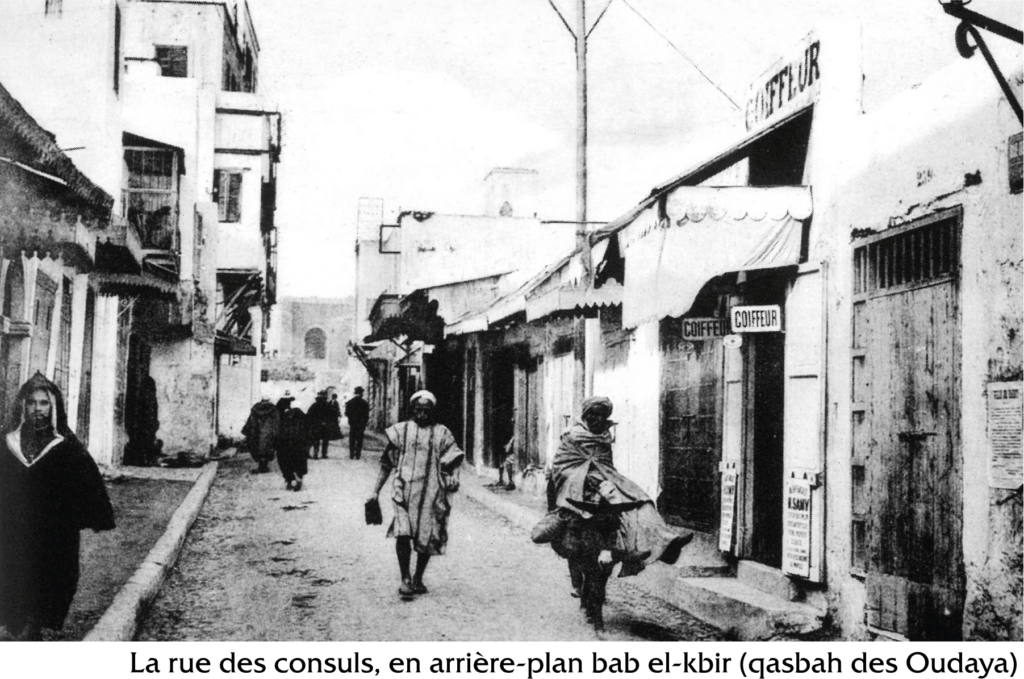
The Stores of sidi Muhammad ben Abdellah (1757-1790) served alternately as a wood warehous (first function in the 18th century),
Customs head office (in the beginning of the 20th century), and Parcel Post head office (1913), The two buildings the make up the complex are 40m long and 8m wide.
2- Carpet auction

Every Thursday morning, a carpet auction is held on sahat Zrabi (square of carpet) in the middle of the street creating a colorful display of traditional carpets.
3- Consuls ctreet
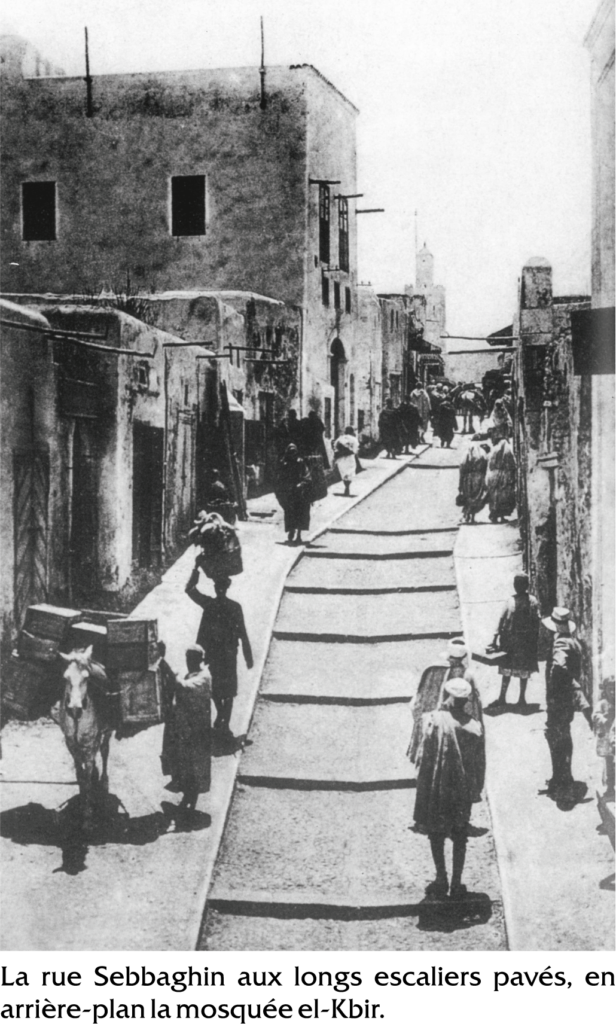
Up until 1912, the European delegations had to live on this street and house of the Consul of France is an example of those beautiful houses
Built around a central pation.
A funduq (caravansary) is a stopping place for traveling merchants generally built on a rectangular plan surrounding a big court. Given that, the ground floor is reserved for animals and stocking of goods,
the rooms are located in the upper floors. Nowadays, some rooms are used by local craft shops
4- funduq ben Aicha, ben Aissa (18th century)

5- Funduq al-Mestiri
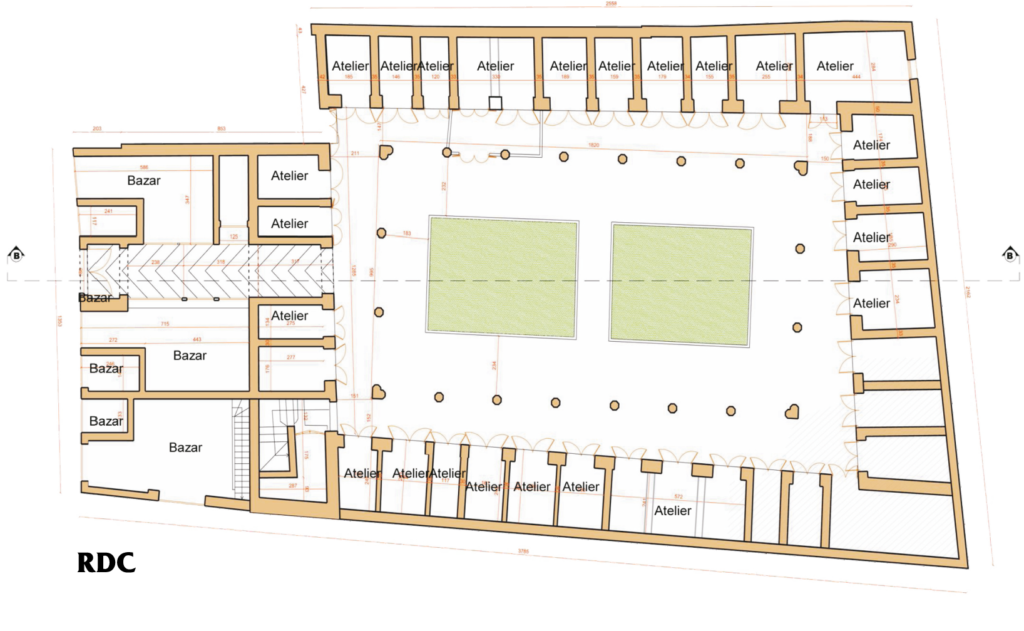
6- Funduq al-Qaâ

7- Jamaâ al-Guezzarin
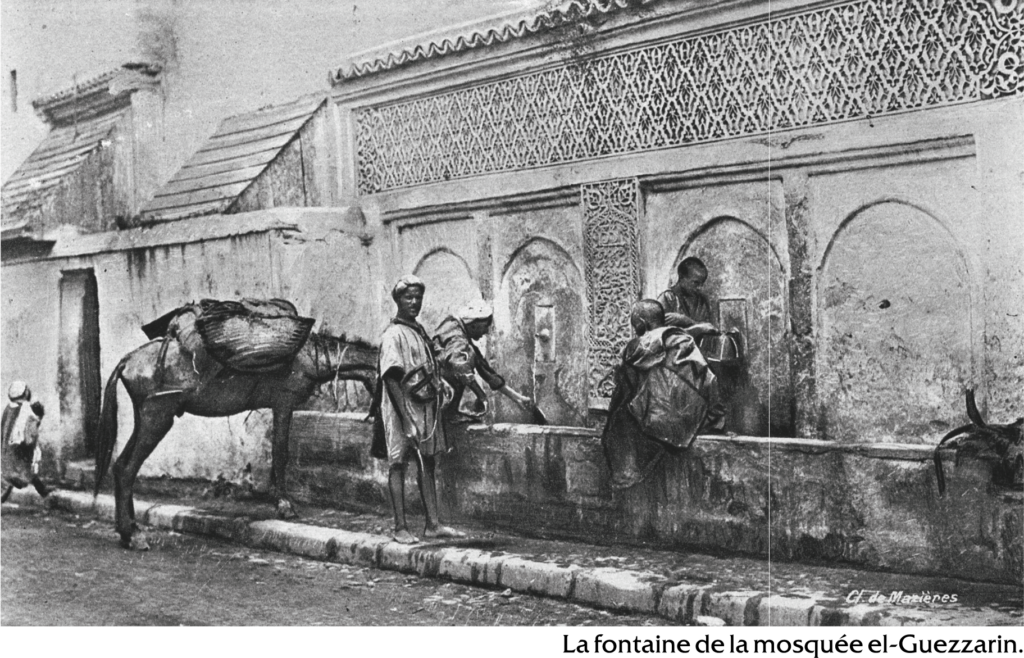
Jamaâ al-Guezzarin (butchers mosque) was built at the end of the 18th centry under the reign of sultan mulay Sliman (1797-1822). A saqaaya (fontain) dating back to the same period was built against it has a pool 5 meter long down into four main arches inside which is inserted a decorative pa,el carving plaster.
8- Gate of Sea
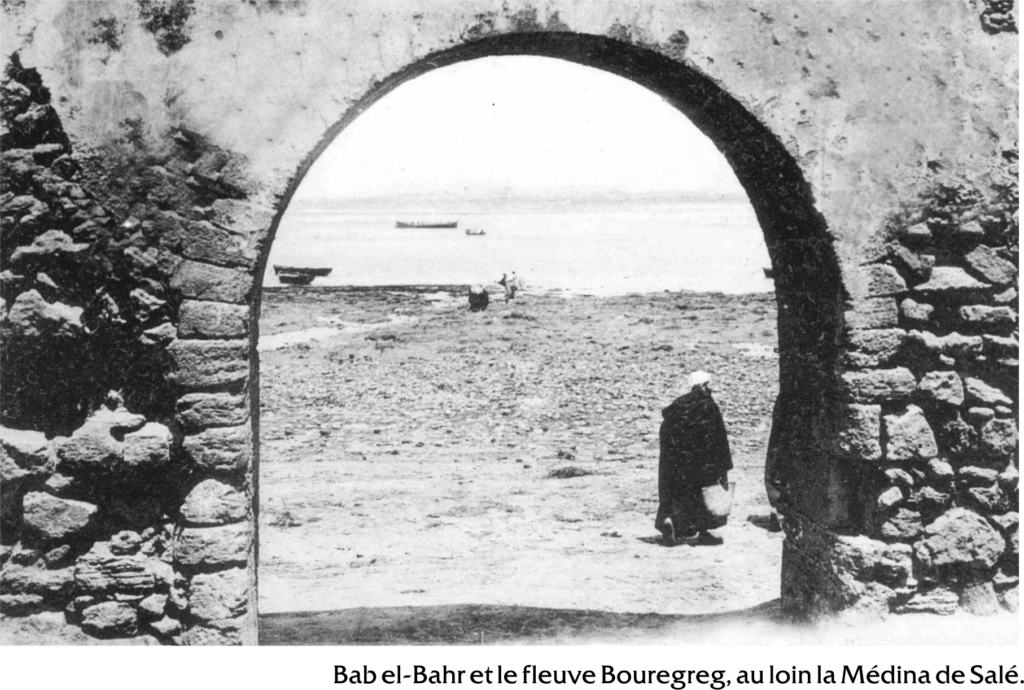
Bab al-Bahr (Gate of Sea) until the beginning of the last century, played an important role as the landing point to sea travelers. The Bouregregg river then come to the foot of the gate xhere boats accosted. In 1910, the first backfills allowed to gain space in front of the river façade and to set up a small port ; a steam boat was used from 1913 to 1936 until it ran aground during a storm.
La rue des consuls fait partie des axes fondateurs de la médina de rabat conçue au XIIe siècle sous la dynastie Almohades. Parallèle aux fleuve Bouregreg, elle mettait la liaison entre la casbah des Oudaya au nord (par le biais de la place haute de Souq laghzal, (marché des laines à tisser) et les grands ateliers réserves (tanneries, marché au grains) au sud.
Sa fonction commerciale active s’est doublée à partir du XVII siècle d’une fonction diplomatique dont elle tire son nom : la rue a abrité les délégations consulaires européennes jusqu’en 1912.
De cette double fonction, commerciale et administrative, on en garde aujourd’hui la trace dans les belles demeures (comme la maison du consul de France) et dans les Fondouqs. Aujourd’hui, cette rue abrite essentiellement des commerces et des ateliers d’artisanat : maroquineries, ébénisteries, bijouteries, tapis.
La rue des consuls s’achève à l’intersection avec la rue Sabaghine (rue des teinturiers) qui descend en escaliers vers Bab al-Bahr, (porte de la mère).
Enfin, dans le prolongement direct, la rue ‘Ouqaasa’ entre dans l’ancien quartier juif du Mallah datant du début du XIXe siècle est construit sur une falaise abrupte à la pointe sud-est de la médina.